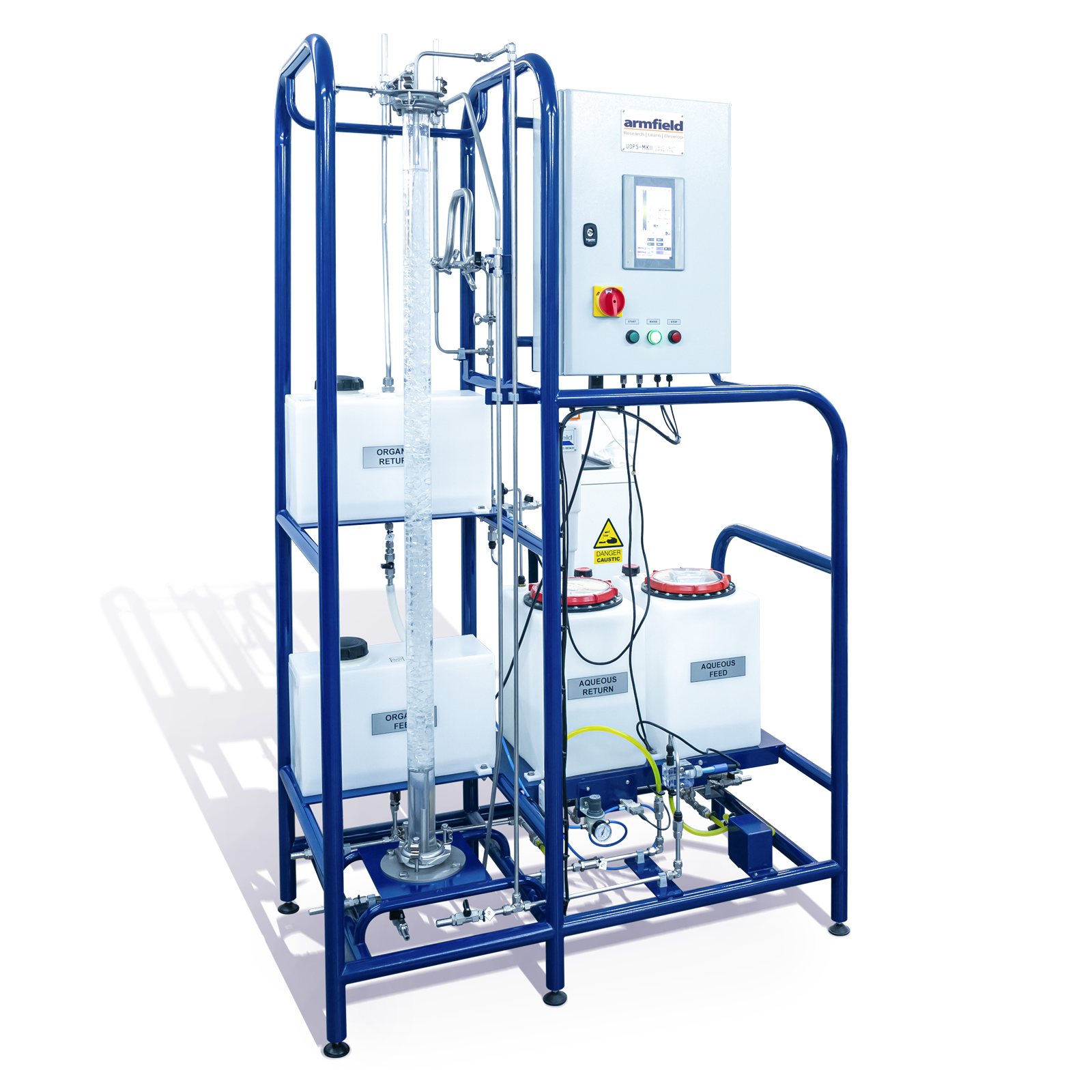Description
The UOP5-MkII comprises a glass separation column, 1600mm long and 50mm diameter, packed with glass Raschig rings which provide a large
surface area for the extraction process. Four process tanks are included, a feed tank and collection tank for the organic phase and a feed tank
and collection tank for the aqueous phase.
The aqueous circuit includes a variable speed rotary diaphragm pump with built in rotation counter that allows the flow rate to be
determined. Conductivity and temperature sensors in both the feed and return lines allow the amount of acid transferred to the aqueous
phase to be determined.
The organic circuit uses a variable speed diaphragm pump that is air powered and contains no electrical components allowing safe
operation using organic solvents in such as 1-Octanol.
The 1-Octanol containing up to 1.5% of Propionic acid is pumped from the organic feed tank to the base of the extraction column.
Demineralised water is pumped from the aqueous feed tank to the top of the extraction column. The density difference between the phases
causes counter-current flow in opposite directions through the packed column where the acid is removed from the organic component into
the aqueous component. The two phases exiting the column are collected in the appropriate return tank. The phase boundary can
be changed between the top of the column and the bottom of the column by operating a single valve. Fine adjustments can be made
to the location of the lower boundary to compensate for variation in specifc gravity of the organic phase.
Temperature and conductivity sensors be determined at the inlet and outlet of the column allow the concentration of Propionic acid in the
aqueous phase to be determined. From this information the extraction efciency of the process can be calculated. All the sensor readings and
calculated values are available for data logging on a personal computer (not supplied).
To obtain accurate results it is important that deionised water is used for the aqueous phase.
After use, the organic phase will retain a small amount of acid. If required, the concentration of acid can be established using titration,
and then topped up with more acid ready for the next run at the required concentration.
Using the recommended 1-Octanol or Canola oil system, this process can be repeated. Alternatively the used organic solvent can be
disposed of periodically and replaced.
Note: The UOP5-MkII has been specifcally designed for use with 1-Octanol.
Although 1-Octanol is classed as flammable, it is difcult to ignite and is safe to use providing reasonable handling precautions are taken.
A number of design features have been incorporated into the equipment to ensure safe operation. For safe operation, the UOP5-MkII can only be
operated at an ambient temperature less than 35ºC. Hence the equipment should be installed in a temperature controlled laboratory if this temperature
will be exceeded. This allows for the use of other organic solvents compatible with the materials of construction.
Description Demonstration Capabilities
Hydrodynamics of a packed liquid / liquid extraction column
Differences in extraction performance using the organic phase or the aqueous phase as the continuous phase
Investigation into the effect of changes in aqueous and organic flow rate
Mass balances and the calculation of mass transfer coefficient Typical software screen shot - Process flow diagram Touch panel contro

 Enquiry:hkmarketing@epc.com.hk
Enquiry:hkmarketing@epc.com.hk 











